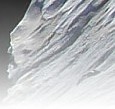Chapter 4 : FBG characterization by optical low coherence reflectometry
Precise characterization of the grating
parameters is essential and the knowledge of the local distributions (Dnac, Dndc
and L) is often desired during the writing process or in distributed
sensing. It has been shown that optical low coherence reflectometry (OLCR) is a
powerful method to characterize the position, length, and index modulation of
homogeneous FBGs [4-1].
Measurements using interferometers can
be affected by small perturbations, like temperature variations or vibrations,
in both interferometer arms that modify the optical path length difference
(OPLD). Corresponding drifts of the interference signal phase have to be
compensated or the measurement has to be performed in a few milliseconds for
assuring high accuracy. A high speed OLCR set-up has been developed to retrieve
the complex spectral properties of chirped gratings [4-2]. The drawback
is a limited S/N (shot noise) of typically -80 dB [4-3]. In
this work, we built a new OLCR set-up, where the S/N is only limited by the
Rayleigh scattering in the fiber and the phase drifts are compensated. The OLCR
phase information of a FBG is precisely measured by comparing it with the phase
of a tunable laser at the same wavelength.
In this chapter, we will show that the
OLCR response is mainly the impulse response of the measured FBG. Moreover, the
interference of partially coherent light is presented and its application to
the OLCR case is developed. Two interfereometers have been conceived and
realized, where the reference laser was either wavelength multiplexed or time
multiplexed. The reconstruction process of the complex coupling coefficient
from the measured OLCR response is exposed. Several FBGs with different
properties were measured and their local properties reconstructed.
| 4.2 |
OLCR measurement of the complex impulse response |
| 4.2.3 |
Propagation in vacuum |
| 4.4 |
Reconstruction process |
|
|





